This document provides an introduction to machine learning techniques presented by Dr. Radhey Shyam. It begins with definitions of machine learning and discusses when machine learning is applicable. The document then covers types of learning problems, designing learning systems, the history of machine learning, function representation techniques, search algorithms, and evaluation parameters. It also introduces several machine learning approaches and discusses common issues in machine learning.
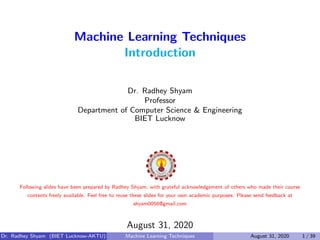
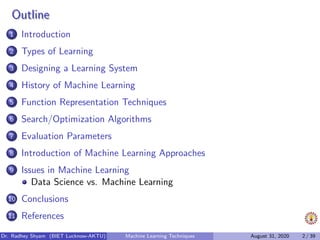

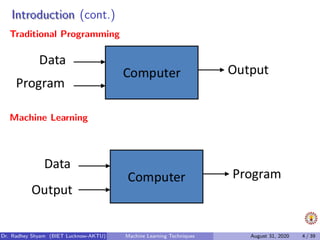


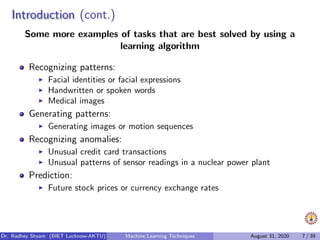








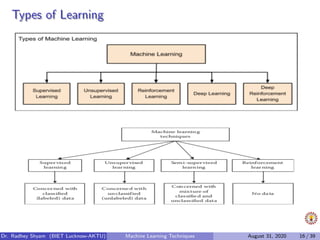





















![ReferencesReferences
[1] Thomas M. Mitchell.
Machine Learning.
McGraw-Hill, Inc., USA, 1 edition, 1997.
[2] Christopher M. Bishop.
Pattern Recognition and Machine Learning.
Springer, 2006.
[3] Stephen Marsland.
Machine Learning: An Algorithmic Perspective, Second Edition.
2nd edition, 2014.
[4] Ethem Alpaydin.
Introduction to Machine Learning.
Adaptive Computation and Machine Learning. MIT Press, Cambridge, MA, 3 edition, 2014.
Dr. Radhey Shyam (BIET Lucknow-AKTU) Machine Learning Techniques August 31, 2020 38 / 39](https://image.slidesharecdn.com/kcs-055mlt-200922063210/85/Introduction-to-Machine-Learning-38-320.jpg)
